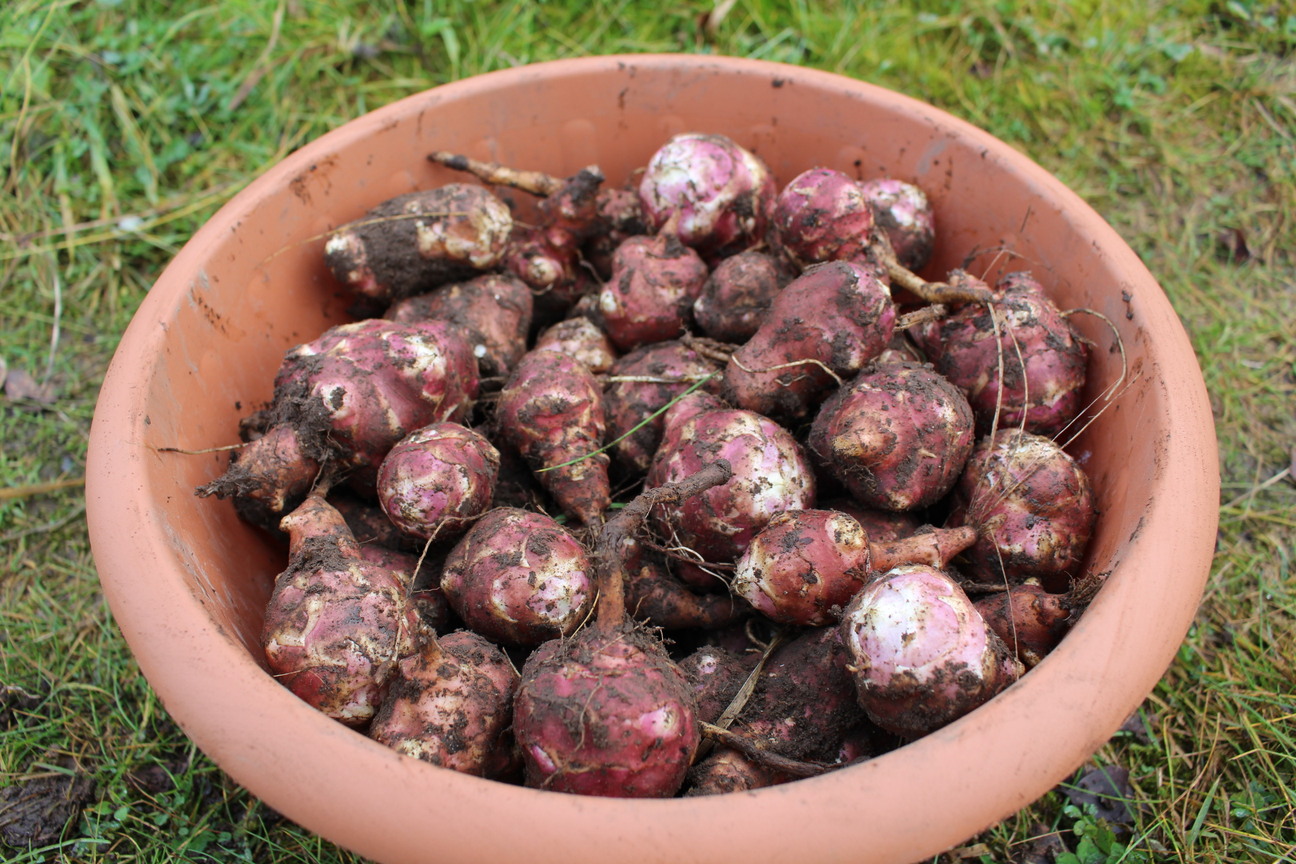
Jerusalem artichoke 'Red Fuseau' tuber harvest
(Picture Copyright GardensForLife.ie)
The
National Plant Collection of Helianthus
strumosus & tuberosus cvs.
Jerusalem artichokes
plants that were for sale at Friend's of Treborth Botanic Garden plant sale in
April & May 2025
I donated a number of Jerusalem artichoke plants to the plant sale at Treborth Botanic Garden this year. All were named cultivars so the label will tell you exactly what they are, viz. Helianthus tuberosus 'Boston Red', or Helianthus tuberosus 'Chinese' (not Chinese artichoke), or Helianthus tuberosus 'Dwarf', or Helianthus tuberosus 'Dwarf Sunray', or Helianthus tuberosus 'Fuseau', or Helianthus tuberosus 'Gerard', or Helianthus tuberosus 'Originals', or Helianthus tuberosus 'Red Fuseau', or Helianthus tuberosus 'Red Tupinambo', or Helianthus tuberosus 'Sakhalinski', or Helianthus tuberosus 'Stampede', or Helianthus tuberosus 'Sugarball', or Helianthus tuberosus 'Urodny', or Helianthus tuberosus 'White Fuseau', or Helianthus tuberosus 'Wilton Rose', or Helianthus strumosus 'Blauange', or Helianthus strumosus 'Aurora Rubin'.
Although pictures online often show lovely yellow flowers remember that they are probably over head height, if they develop at all in our Gwynedd climate. Some cultivars are more likely to flower than others, which is probably late summer anyway.
You'll may see above two cultivars of Helianthus strumosus. These are a different species but look very much like Jerusalem artichokes and produce tubers that look very similar, and are also eaten the same way. Both species came to Europe from what is now Canada and the USA in the 17th Century and both are now found growing wild in parts of Europe. So it is quite possible that there was some degree of cross breeding over the years although I have not read anything about this.
Beware when you plant out your purchase that the shoots are NOT frost hardy, although the tubers are. Also, slugs and snails are quite partial to the new growth.
Caution
In case you weren't aware Jerusalem artichokes are tall growing, usually 5
or 6 feet, although sometimes more especially the cultivar 'Chinese'. Earthing
up the lower stem is said to help these tall plants in windier sites, but
doesn't increase the crop, like potatoes. They will grow almost anywhere but for
good crops need
a moist soil and prefer a fertile soil. The tubers develop in late summer and
autumn, so don't start to harvest until late autumn and it's best to wait until
the stalks have mostly gone brown. The tubers are fully hardy so can be left in
the ground until needed, although some advice leaving the tubers for a couple of
weeks to "ripen" after lifting. I don't know if that is necessary, but
if you are new to the tubers only eat a tiny amount at first tasting and increase
the amount very gradually. They contain a carbohydrate which is difficult to digest and will
produce a lot of wind if your gut is not used to it. As time goes by some of
this inulin turns to sugar which helps a little, but still slowly does it
or you may be put off for life!
Other pages on this site Home about cultivation Contact My plants My Sources in the UK

Jerusalem artichoke 'Red
Fuseau' tuber harvest
(Picture Copyright GardensForLife.ie)
Last revised 13th May 2024
Copyright © David
Barrett